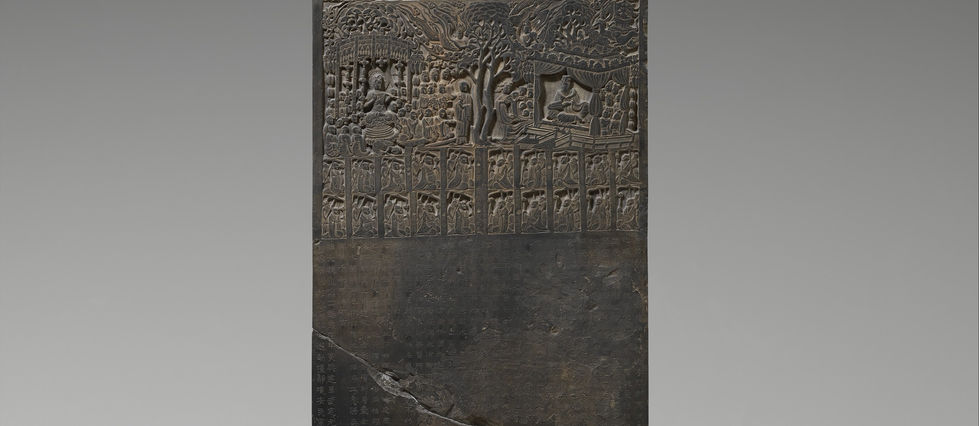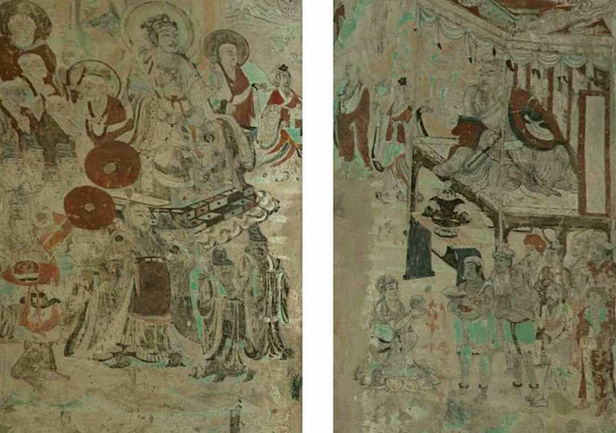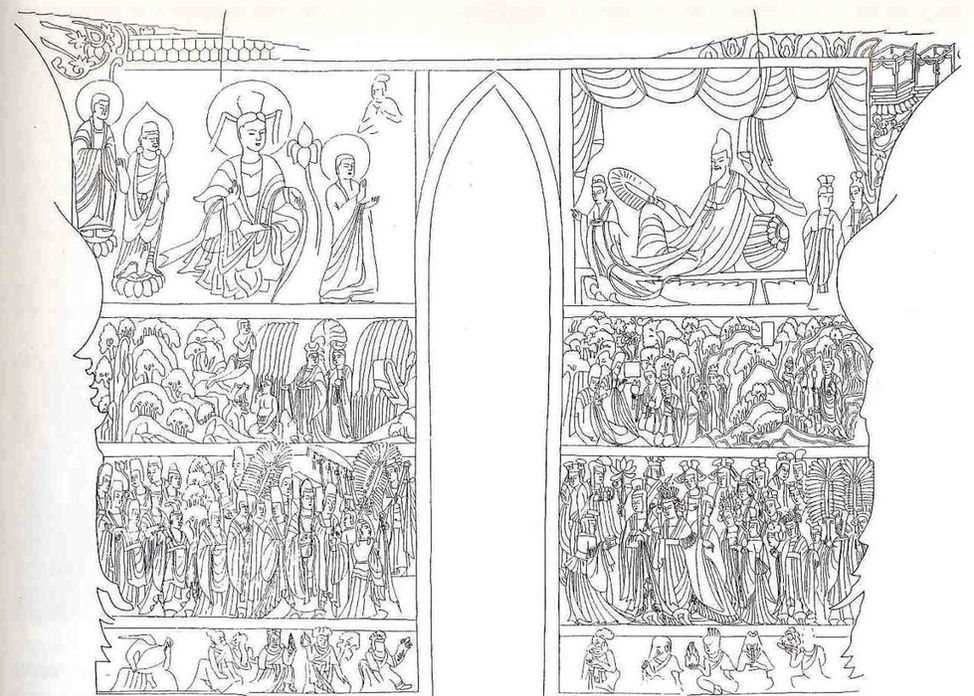Vimalakirti Tableaux
6th-century Buddhist Stele in the Metropolitan Museum of Art
Buddhist Stele Commissioned by Helian Ziyue
The Metropolitan Museum of Art
Date: inscription dated 533–43
Medium: Limestone
Dimensions: H. 24 in. (61 cm); W. 53 in. (134.6 cm); D. 33 in. 83.8 cm)
The upper half of this 6th-century stele in Metropolitan Museum depicts an renowned episode from the Vimalakirti Nirdesa Sutra: Manjusri's call on Vimalakirti. Vimalakirti sits in a curtained and tasseled pavilion at right, attended by fourteen figures; Manjushri is accompanied by thirty attendants. Standing to either side of the two trees at center are the monk Shariputra and a goddess, who together represent the scene's most dramatic moment:
The goddess used her supernatural powers to change Sariputra into herself and herself into Sariputra to demonstrate that all phenomena are unreal; all things are neither male nor female.
Read the Text of Vimalakirti Nirdesa Sutra
Vimalakirti Tableaux
in Dunhuang Buddhist Caves
Vimalakirti Sutra Illustration
Dali Kingdom, early 12th century in the Metropolitan Museum of Art
The Metropolitan Museum of Art
Date: Northern Song dynasty (960-1127)
Medium: gold and silver on purple silk
Dimensions: 11 in. × 26 ft. 7/8 in. (27.9 × 794.7 cm)
Throughout Buddhism’s early history in China, the ascetic aspects of the religion—the practice of celibacy and self-deprivation—came into conflict with the Chinese family system and social values. The Vimalakirti Sutra, celebrating the supremely wise layman Vimalakirti, provided canonical proof that enlightenment and salvation were possible even for believers who remained outside monastic orders.
In this scroll, which transcribes chapters 5 through 9 of the sacred text, the illuminated frontispiece portrays Vimalakirti seated on a dais preaching to a large audience. He is depicted with the attributes of a traditional Confucian scholar: long beard, fly whisk, and armrest. An inscription at the end of the scroll indicates that it was executed in remote southwest China, present-day Yunnan Province. Lavishly painted and written in gold and silver on purple silk, the scroll was commissioned by the prime minister of the independent kingdom of Dali as a gift for the Chinese ambassador.
Vimalakirti and the Doctrine of Nonduality
Yuan dynasty, 1308, in the Metropolitan Museum of Art
Vimalakirti and the Doctrine of Nonduality
The Metropolitan Museum of Art
Date: Yuan dynasty (1271-1368)
Medium: ink on silk
Dimensions: Image: 15 7/16 x 85 15/16 in. (39.2 x 218.3 cm)
This handscroll depicts an episode from the Vimalakirti Sutra, the Buddhist scripture in which Vimalakirti, a layman, and Manjushri, the Bodhisattva of Wisdom, engage in a theological debate. According to the sutra, Vimalakirti proved the more subtle by remaining silent when asked to explain the ultimate meaning of the Buddhist Law. The subject appealed to China's Confucian elite, for it demonstrated how a cultured layman could surpass even a deity in his understanding of doctrine.








